CHOQUEQUIRAO TREK CLASSIC 4 DAYS
You can visit the architectural complex Choquequirao is situated in Vilcabamba at 3100 meters, considered the last Inka refuge and place of resistance from the invaders, when doing ....
INCA JUNGLE TRAIL 4 DAYS
Our Inca Jungle Trail classic To Machu Picchu combines adventure sports such as mountain biking, rafting, zip line, hot spring and trekking for 4 days until you reach Machu Picchu....
INCA QUARRY TREK 4 DAYS
The quarry of Cachicata was the place of extraction of the stones that were used for the construction of Ollantaytambo and many surrounding areas....
INCA TRAIL CLASSIC 4 DAYS
In the upper area close to the Skies, the Incas built one of their best-preserved cities, now recognized as one of the 7 wonders of the modern world. Many travelers and adventurers come....
RAINBOW MOUNTAIN FULL DAY
According to the research, the coloration of the rainbow mountain is due to the composition of minerals that it has: the pink color is for the red clay, fangolitas and arilitas. The whitish, for the quartzose ...
Monday, 26 May 2025
ONE DAY TOURS CUSCO
Thursday, 9 March 2023
RUTAS A MACHU PICCHU
La llaqta de Machupicchu representa una obra maestra de arte, arquitectura e ingeniería en perfecta armonía con la naturaleza y resulta el legado más importante de la civilización Inka a la humanidad. Fue abandonada durante la segunda mitad del siglo XVI; sin embargo, nunca estuvo perdida ya que fue visitada y habitada ocasionalmente.



Friday, 24 February 2023
PISAQ
Friday, 17 February 2023
MONTAÑA DE COLORES
Monday, 13 February 2023
MACHU PICCHU
IMPORTANT INFORMATION:
Machu Picchu is one of the 7 Wonders of the Modern World, Heritage of Humanity, Historical Sanctuary of Peru and probably the most important archaeological site in Latin America.
Machu Picchu es majestic architecture comprises 140 structures throughout the citadel.
Machu Picchu was built by the Inca Pachacutec around the year 1460.
After being forgotten, it was only in 1911 that the American Hiram Bingham reached Machu Picchu on an expedition and spread the site worldwide.
Its main buildings of Machu Picchu are the Intihuatana, the Temple of the Sun and the Temple of the Three Windows.
Tuesday, 28 April 2020
Inca Jungle: The Adventure tour to Machu Picchu
The Inca Jungle tour is a tour that departs from the City of Cusco and ends in Machu Picchu, after 4 days and 3 nights after performing a series of adventure sports such as: cycling, trekking, canoeing and zip line.
The Inca Jungle is one of the most popular tours in Peru.

What is the Inca Jungle route?
The Inca Jungle begins in the city of Cusco and ends in Machu Picchu.
During the journey you cross the Sacred Valley of the Incas, then enter the jungle eyebrow of Cusco to finally arrive at the Wonder of the World.
This is the route during the 4 days of the tour:
- 1st. day: Cusco - Abra Málaga - Santa María Town.
- 2nd. day: Santa María - Thermal baths - Santa Teresa town.
- 3rd. day: Santa Teresa - Hydroelectric - Aguas Calientes town.
- 4th. day: Aguas Calientes - Machu Picchu - Cusco.
The Inca Jungle runs through its highest point in the so-called ‘Abra Málaga’ (4,230 masl).
The lowest point is in the town of Aguas Calientes (2,000 m.a.s.l.), also known as Machu Picchu town.
Map of the Inca Jungle Machu Picchu
The Inca Jungle begins in the city of Cusco.
After doing various adventure sports, visit the Inca City of Machu Picchu.
The return to the city of Cusco is by train and bus.
What is the weather like during the Inca Jungle?
The climate during the Inca Jungle is varied.
The coldest point is in Abra Málaga (average temperature of 9ºC during the day). Then we descend to the tropical climate of the jungle eyebrow.
The warmest point is in the town of Santa Teresa (day temperature up to 26ºC).
What is the flora and fauna like during the Inca Jungle?
The Inca Jungle is characterized by the beautiful landscapes during the tour.
Along the way you can see vizcachas, llamas, spectacled bears, cock of the rocks and a wide variety of orchids.
In addition, plantations of bananas, mangoes, oranges and more are crossed.
Does 4 days seem too long for the Inca Jungle? There is another 3-day service, which accelerates the pace of the walks to reach Machu Picchu earlier. However, the most popular Inca Jungle tour is the one that lasts 4 days.
What sports does the Inca Jungle include?
The Inca Jungle includes the following adventure sports:
Cycling (included).
Hike (included).
Canoeing (not included).
Zipline (not included).
Who can do the Inca Jungle?
The Inca Jungle is available for tourists of all ages.
However, the tour is recommended for tourists in good physical shape.
Older adults should consult their doctor before the tour.
Minors must be accustomed to physical efforts and take the tour in the company of their parents.
Sports in the Inca Jungle
How is the tour of the Inca Jungle?
Tours to the Inca Jungle may vary according to the travel agency. However, in general, everyone follows this itinerary:
Day 1: Cusco - Santa María:
- Pick up from the visitor's hotel.
- Travel by bus from Cusco to ‘Abra Málaga’ through the Sacred Valley of the Incas.
- Bike descent from ‘Abra Málaga’ to the town of Santa María.
- Lunch.
- Canoeing adventure on the Vilcanota river (Optional).
- Accommodation in Santa María.
- Breakfast.
- Walk from Santa María to Santa Teresa through ancient Inca trails.
- Lunch in the town of Kellomayo.
- Relax in the thermal baths of Cocalmayo.
- Dinner and lodging in the town of Santa Teresa.
- Breakfast.
- Adventure in the Zip Line (optional).
- Walk to the ‘Hydroelectric’ station.
- Lunch.
- 'Hydroelectric' walk to the town of Aguas Calientes.
- Dinner and lodging in Aguas Calientes (Machu Picchu town).
- Breakfast.
- Trekking up from Aguas Calientes to Machu Picchu (optional take bus).
- Tour with a tour guide through Machu Picchu.
- Free visit to Machu Picchu.
- Descent walk from Machu Picchu to Aguas Calientes (optional take bus).
- Return by train from Aguas Calientes to Ollantaytambo.
- Return by bus from Ollantaytambo to Cusco.
- The first sport that is performed in the Inca Jungle is cycling. This tour begins at the highest point of the journey in the Abra Málaga (4,230 masl / 13,877 ft).
- From there you descend in the company of an expert guide for 2 or 3 hours until you reach the town of Santa María.
- Cycling is included in all tours to the Inca Jungle.
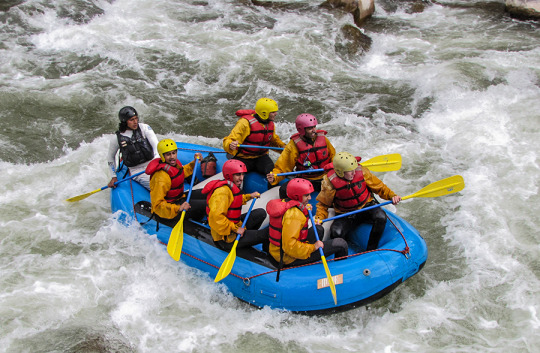
- Boating is an optional sport during the Inca Jungle.
- It is carried out in the waters of the Vilcanota river in the company of an expert guide.
- The difficulty of the adventure depends on the time of year.
- Between April to October, the waters are suitable for exciting low-risk tours.
- Between November to March, the river is only suitable for boating experts.
- At various points of the Inca Jungle walks are made.
- The trek from Santa María to Santa Teresa covers ancient Inca trails.
- The section from Santa Teresa to Aguas Calientes, crosses one of the most incredible landscapes before reaching Machu Picchu.
- The difficulty of the walks is not demanding.
- The Cocalmayo thermal baths are an optional stop during the Inca Jungle.
- The pools are outdoors and have a temperature of up to 44ºC.
- This section is an opportunity to relax after several hours of walking.
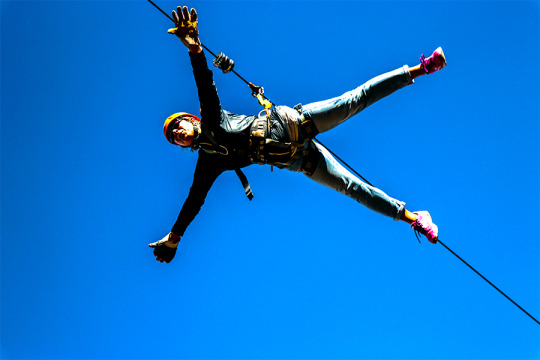
- This extreme sport is one more option during the Inca Jungle.
- It takes place in the town of Santa Teresa, at the beginning of the third day.
- The experience is doubly incredible due to the beauty of the landscape.
- Then, the visitors meet the group to continue the trip to Machu Picchu.
Is the Inca Jungle dangerous?
- The Inca Jungle is a safe adventure.
- The tour is carried out in the company of a professional tour guide trained in solving emergency situations.
In general, an Inca Jungle tour includes the following:
- Transportation to the ‘Abra Málaga’.
- Professional guide throughout the tour.
- Bicycle and safety implement.
- 3 nights of lodging (in Santa María, Santa Teresa and Aguas Calientes).
- Food during the tour (breakfast, lunch and dinner).
- Entrance to Machu Picchu.
- Transportation by train from Aguas Calientes to Ollantaytambo.
- Transportation by bus from Ollantaytambo to Cusco.
- Entrance to the Cocalmayo Thermal Baths.
- Boating service and its implements.
- Zip line service and its implements.
- Transportation by bus (from Aguas Calientes to Machu Picchu and vice versa).
- Inca Jungle reservations are made at a tourism agency through the internet.
- It is also possible to buy the tour directly from a tourism agency located in the Historic Center of Cusco.
- The Inca Jungle has a moderate difficulty. Adventure sports do not require significant physical effort.
- In total, approximately 35 kilometers of trekking are traveled on easy routes of great scenic beauty.
- The Inca Jungle has an approximate cost of 300 U $ D. However, this price varies according to the tourism agency and the quality of the service they provide.
- The best time to do the Inca Jungle at Machu Picchu is in the dry season (from April to October).
- During those months, the days are sunnier, the colder nights and the rains are unusual. Those days are ideal for outdoor excursions.
It is recommended to take the following to the Inca Jungle tour:
- Cap or hat.
- Sunscreen.
- Mosquito repellent.
- Trekking shoes.
- Canteen with water.
- Cotton clothes for 4 days.
- Rain poncho (in case of precipitation).
- Bathing suit and towel (for the Cocalmayo thermal baths).
- Trekking backpack.
- Extra cash (in case you need it).
- Photographic camera.
The Inca Jungle at Machu Picchu is one of the most incredible experiences in Peru. To fully enjoy this adventure it is recommended to consider the following:
- The Inca Jungle is recommended for young people of any nationality. However, there are cases of adults with advanced age who want to do this adventure.
- The Inca Jungle does not travel places that can cause soroche (altitude sickness). However, it is recommended to acclimatize at least 1 day in the city of Cusco before starting the tour.
- Not in good physical shape? The Inca Jungle is not difficult. It is recommended to prepare physically at least only 1 week before the tour.
- Don't feel ready for extreme sports? Many sports in the Inca Jungle are only optional.
- Do you want to do the Inca Jungle with your group of friends or family? There are private tours. You only have to request it at the tourism agency of your choice.
Tuesday, 31 March 2020
General Information of the Ausangate Mountain - Cusco - Peru
Ausangate, snowy (6,372 m)
Andes (South America)Vilcanota mountain range (Andes), in Peru, with an altitude of 6,372 m above sea level. It is located about 100 kilometers southeast of the city of Cusco. AUSANGATE TREK INFORMATION
Basic information
- Relief unit: Andes
- Country: Peru (South America)
- Main summit
- Region: Peruvian Andes
- Altitude: 6,372 m
- Latitude: 13 ° 47 '18' 'S
- Longitude: 71 ° 13 '40' 'O

Every year, hundreds of mountaineers visit the Andean region of Peru. However, not many are aware of the existence of Ausangate, one of the Inca divinities of 6,410 meters high.
Located near Cusco, the "mountain of seven colors" is the fifth highest peak in Peru. Its remote existence from traditional routes means that few tourists approach its walls and glaciers; However, it is worth visiting for its unmatched beauty.
During the Inca Empire, Ausangate embodied one of its most important divinities. Distinction that still lasts; since, the inhabitants who live in the surroundings continue to consider her as an unreachable and sacred god.
The moderate difficulty of ascending the mountain and the possibility of living a unique experience outdoors, make visiting Ausangate a relevant option.
How to get?. Ausangate is located about 100 kilometers southeast of the city of Cusco. Leaving the city by car, the estimated travel time is 3 hours. Upon arrival in Chilca, you have to continue walking for another 3 hours, approximately, until you arrive at this formidable mountain of colors.
For tourists who do not have their own vehicle, there is the possibility of hiring a tour from the city of Cusco, or renting a private vehicle from Thrifty, one of the leading companies in the business.
Sunday, 29 March 2020
INFORMACION OF HUCHUY QOSQO - CUSCO - PERU
Where is Huchuy Qosqo located?
Huchuy Qosqo is located in the peasant community of the same name, just under 5 km from the city of Calca in the department of Cusco, in the Sacred Valley of the Incas; exactly at a summit at 570 m. over the Urubamba river basin (Vilcanota). The Huchuy Qosqo route is very beautiful; walking its trails will allow you to visit some Andean communities, archaeological centers and enjoy beautiful landscapes. Many people take advantage of visiting Huchuy Qosqo on their trip to Machu Picchu. HUCHUY QOSQO TREK TO MACHU PICCHU
What does Huchuy Qosqo mean?
Huchuy Qosqo means "Little Cusco", but it also has other names; one would be Qaqyaxaqixawana and the other Qaqyaqhawana, this means "from where the rays are observed"; and without a doubt it is a good name since being 800 meters above the Sacred Valley of the Incas, gives you the opportunity to see the dramatic light and sound show, at the moment when lightning and thunder descend from the sky to crash into the ground. Others say that the site was probably known in Inca times as "Caquia Jaquijahuana".Huchuy Qosqo Archaeological Complex (Qaqyaqawana)
The compound located in Huchuy Qosqo, is called Qaqyaqawana; Quechua name that refers to the place where the lightning is seen. This archaeological site is located in the upper third of the mountain called Qaqya (thunder), and exhibits one of the most impressive topographical modification works through the use of andenería, modulating the edges of precipices and vertical ravines over the Vilcanota Valley, culminating on platforms that were used as ceremonial esplanades, around which several architectural structures made of stone and adobe can still be found standing. Materials used and worked with great judgment, achieving a fine finish.In addition, the structures of the enclosure are distributed in such a way that they architecturally resemble the city of Cusco; it is for this reason that at the beginning of the 20th century it receives the name of Huchuy Qosqo (small Cusco). One of the most outstanding characteristics of this archaeological site is the use of lithic material combined with adobe and clay. This shows the knowledge and mastery of the different construction materials, used with high technology, especially adobe; The centuries-old walls built of this material still defy the strong inclement weather of the area, seismic movements and of course the passage of time.
INFORMATION OF HUCHUY QOSQO TREK
INFORMATION OF THE ARCHAEOLOGICAL COMPLEX OF HUCHUY QOSQO
Description
This complex is the most important archaeological center in the Urubamba valley, after Ollantaytambo and Pisac. The ruins are impressive, although the conservation of the site is inferior to that of Ollantaytambo or Pisac, because they are older.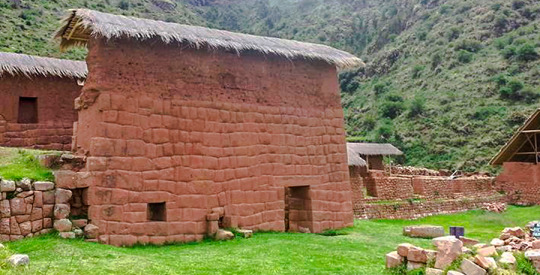
But unlike the aforementioned places, Huchuy Qosqo has a peculiar architecture: the buildings have been built on polished stone bases with a fine finish, with clay plaster (they are the best preserved parts) and the highest floors are made of adobe. INFORMATION OF HUCHUY QOSQO TREK
A kallanka (rectangular enclosure that could measure up to 70 meters long and that were important state centers where Inca officials stayed) is observed, at least 40 to 50 meters long. Also a remarkable building with two stone floors and an upper one of adobe. There are also large terraces, a very large plaza and a large Inca gate through which a well-preserved path leads from Tambomachay.
The Hispanic chronicles refer that Huchuy Qosqo (probably a site known in Inca times as Caquia Jaquijahuana) was the work and preferred place of the Inca Wiracocha. To this, Maria Rostworoski adds, in her work "History of the Tahuantinsuyo", that this sovereign established the conquest over the towns of the Urubamba valley and that he chose as his successor his Inca son Urco who, dizzy with power and vices, proved to be totally incapable of ruling. Inca royalty was very confused by this choice and they tried to conspire to impose on another Wiracocha son, Prince Cusi Yupanqui. Social unrest and tension increased every day and to make matters worse, the darkest night fell on Cuzco: the Chancas reached the gates of the capital and were ready to destroy it. It is the year of 1438. Wiracocha abandons the city to his fate and, accompanied by his son Inca Urco, takes refuge in his palaces in the Urubamba Valley, among which was Huchuy Qosqo.
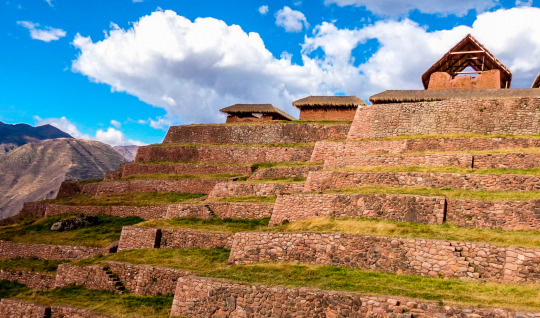
After the Spanish conquest, Gonzalo Pizarro found the mummy that supposedly belonged to the Inca Wiracocha here and ordered to burn it. The descendants of the Inca kept the ashes in a jar that many years later the chronicler Polo de Ondegardo would discover.
Characteristics of the visit
It is possible to visit Huchuy Qosqo in two ways, the first walking from Cusco and Tambomachay along the Inca trail. The other way is going up from the Sacred Valley after crossing the Wilcamayo river (today Vilcanota).Schedule
Hours (all year)Free accessSaturday, 28 March 2020
LARES TREK TO MACHU PICCHU - CUSCO - PERU
The Lares valley is located in the Sacred Valley of the Incas, on the way to Machu Picchu, making a detour in the town of Calca to start the trip to the Lares valley, in Calca one can stop to buy provisions, with water , cookies and fruit, you can also enjoy a delicious breakfast in the main market of the town of Calca, it is recommended to leave early
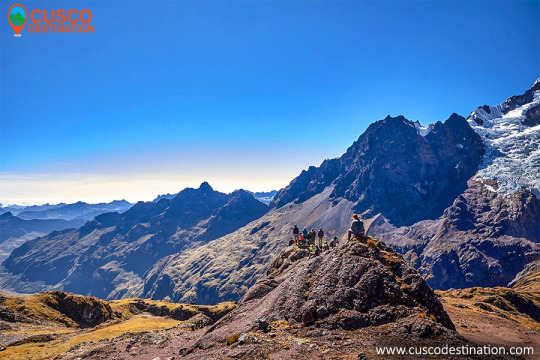
Lares has allowed to maintain the nuance of its Andean people even though it is located at a distance not too far from the Sacred Valley, this valley is very pleasant for walks, experiential tourism, and a dip in its hot springs as well as the baths Machu Picchu hot springs, if you do the Lares trek it is normally 4 days, including Machupicchu this is the most common thing that travelers do.
The thermal baths in the Lares valley, said baths have a separate mention since the one who goes to Lares goes to the thermal baths, I am baths are medicinal and relaxing and are characterized by their color and smell, the yellowish color and a sulfur smell since these waters probably come from a volcano, particularly it is not known exactly where they come from, the thermal baths of Lares are very hygienic and are contained in pools made of very well treated stones, these pools are cleaned daily and They maintain a cleanliness at the height of the visitor.
This route offers a unique experience, an tourism route that gives us an unforgettable experience in the heights of the Sacred Valley. In the Lares Valley besides enjoying beautiful scenery you can enjoy a beautiful experience living with the local people, who will receive us with open arms showing the most beautiful thing about this place ... its "simplicity". On this route you can also enjoy the medicinal thermal baths, appreciate andean lagoons, snow-covered mountain passes and finally visit the Inca citadel of Machu Picchu.
Useful Information
- Starting Altitude - 2900m / 11151ft.
- Highest Altitude - 4780m / 15,682 ft
- Walking Distance - 34 km / 21 miles
- Longest Day - Day 1, approximately 14km / 8.7 miles
- Overall Difficulty - Moderate - Difficult
IMPORTANT INFORMATION:
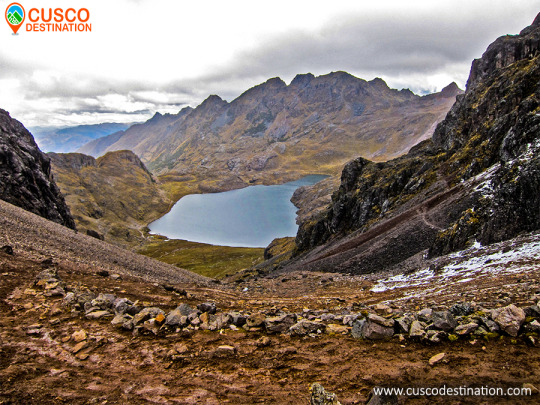
In the thermal baths of Lares there are 6 large swimming pools at different temperatures between 36 and 44 °C, you can choose to relax quietly, they are ideal for treating bone and gastrointestinal diseases.
Lares is surrounded by a mountain range that includes the Nevado Veronica (5900m high), the Sawasiray (5700m high), the Pitusiray and Chicon (5500m high). Small communities of Quechua-speaking farmers inhabit this recently-explored territory, who preserve their customs of herding llamas and alpacas, potato cultivation and textile production.
The recommended dates for traveling are the months from April to November with no rain in these months the climate is sunny, with a blue sky all day.
Machu Picchu is one of the 7 Wonders of the Modern World, Heritage of Humanity, Historical Sanctuary of Peru and probably the most important archaeological site in Latin America.
Machu Picchu is majestic architecture comprises 140 structures throughout the citadel.
Machu Picchu is was built by the Inca Pachacutec around the year 1460
After being forgotten, it was only in 1911 that the American Hiram Bingham reached Machu Picchu on an expedition and spread the site worldwide.
Brief Itinerary
- Day 1: Cusco – Sacred Valley – Huaran – Cancha Cancha – Acopata
- Day 2: Acopata – Pachacutec Pass – Quishuarani
- Day 3: Quishuarani – Cuncani – Lares Hot spring – Ollantaytambo – Aguas Calientes
- Day 4: Machu Picchu - Cusco
LARES TREK TO MACHU PICCHU ITINERARY:
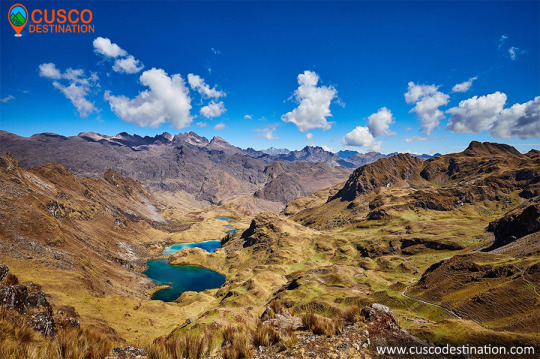
Day 1: Cusco – Sacred Valley – Huaran – Cancha Cancha – Acopata
We will pick you up early from your hotel to take you to the beginning of the hike at Huaran (3,000 m/9,840 ft). The trail climbs gently following the Cancha Cancha river towards the community of the same name. On this walk along the river we will see cultivated fields and pass through old qiwiña (Polylepis) forests. This type of vegetation is very interesting and the valley itself is very impressive. We will have lunch half way through the hike. We will pass by the village of Cancha Cancha (3,956 m/12,976 ft). on the way to our camp. this day we will walk 6 hours to our camp in Acopata.
Day 2: Acopata – Pachacutec Pass – Quishuarani
After our breakfast we will continue with our hike up hill, for 3 hours, then we will reach the highest point of the trek, Pachacutec Pass (4,780 m/15,678 ft.). The landscape from here is wonderful. The Pitusiray and Sahuasiray snowcapped mountains will be right in front of us.
After we will hike downhill for 2 hours until we reach our lunch spot, next to a captivating lake.
After Our lunch we will descend for another 2 hours into the valley. We will pass by several glacial lakes along the way. Also we can see herds of alpacas, llamas and sheep. It is also possible to see Gray Brocket Deer, Viscachas, Andean Geese, the rare Giant Coot, Puna Hawks and the impressive Andean Condor. Tonight we camp at 3,870 m/12,694 ft close to Quishuarani village, which has typical stone houses
Day 3: Quishuarani – Cuncani – Lares Hot spring – Ollantaytambo – Aguas Calientes
After Our Breakfast, we walk another valley and climb up to the second pass at Willcaccasa mountain (4,458 m/14,622 ft) , for 3 hours. Again the landscape of the Andes, turquoise lakes and its beautiful valleys are impressive.
After the pass we will walk downhill for 2 hours, passing many awesome lakes. This takes us to Cuncani village (3,900 m/12,792 ft).
We then continue downhill for 3 hours towards the Lares Valley and its hot springs, where we can have a well deserved soak. This is also our lunch spot.
Then that we are fully relaxed, we will get in our private van, which will be waiting for us, for the 3 hour drive to Ollantaytambo (2,792 m/9,158 ft). We will have dinner in Ollantaytambo. After dinner, we will take the train to Aguas Calientes. We’ll spend the night there before climbing the Inca citadel of Machu Picchu.
Day 4: Machu Picchu - Cusco
After an early breakfast at the hotel, we walk uphill to Machu Picchu at 5:00 am. or take the bus from Aguas Calientes to Machu Picchu (Optional bus $16 each way), upon arrival at the Citadel we can appreciate the enigmatic beauty and the incomparable example of architectural perfection and hydraulics of one of the 7 Wonders of the Modern World, we will have a guided tour of about 2 hours, where we can appreciate the Main Plaza, the Circular Tower, Intihuatana, The Royal Quarters, the Temple of the Three Windows and the Cemetery, you are then given free time to stroll around the citadel . You will have all morning in Machu Picchu to take pictures, maybe to climb the Wayna Picchu or Machu Picchu Mountain, enjoy this mystical place. Then we´ll descend by bus to Aguas Calientes for lunch and then calmly return by train to Ollantaytambo where our tourist transport to the city of Cusco will be expecting us, and will later transfer you to your hotel.
OTHER ACTIVITIES:
Climb up Huayna Picchu and appreciate the beauty and magnificence of Machu Picchu from there (We recommend that you book in advance) Not Included
Climb Machu Picchu Mountain and appreciate the beauty and magnificence of Machu Picchu from there (We recommend that you book in advance) Not Included
Visit the new local museum or the hot springs in Aguas Calientes later in the day. Not Included
- Meals: Breakfast
- Tour: 2 hour guided tour of Machu Picchu
MORE INFORMATION OF LARES TREK TO MACHU PICCHU
Friday, 20 March 2020
INCA TRAIL TO MACHU PICCHU
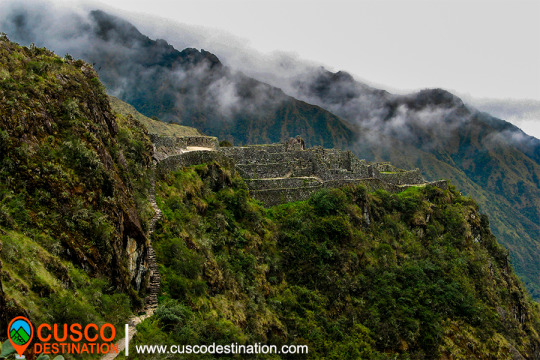
The Qhapac Ñan managed to cover up to 30 thousand kilometers from the current countries of Peru, Ecuador and part of Bolivia, Chile, Argentina and Colombia. The trekking route from the Inca Trail to Machu Picchu is only a small part of the extensive network of roads of the Qhapac Ñan.
The Inca Trail to Machu Picchu
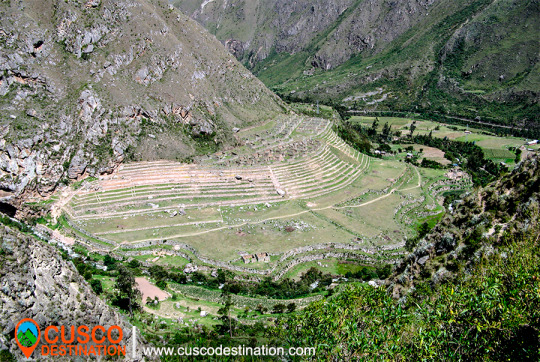
The Inca Trail was revealed to the world in 1915 when it was being excavated in the Inca City. Three decades later, the route was traced by the Viking expedition in 1942. Today, thousands of visitors decide to travel the 43 kilometers to the ‘Puerta del Sol’ in Machu Picchu.
However, Machu Picchu is not the only archaeological site that you will see on the Inca Trail. On the tour you will also appreciate the ruins of Llactapata, the archaeological site of Runkurakay, Saycamarca, Phuyupatamarca and Wiñaywayna.
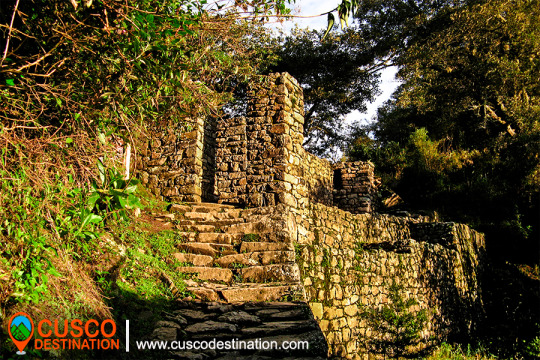
There are trains and buses that can take you directly to Machu Picchu. However, the experience of arriving as the Incas did for centuries is unmatched.
Versions of the Inca Trail to Machu Picchu
Not all people have the days necessary to travel the Inca Trail (4 days and 3 nights). That is why there are 3 versions depending on the time you have:- Classic Inca Trail: 4 days and 3 nights (43 kilometers of walking).
- Imperial Inca Trail: 5 days and 4 nights (43 kilometers of walking).
- Short Inca Trail: 2 days and 1 night (12 kilometer walk).
About tickets to enter the Inca Trail
Due to the high demand for tickets, you must get the entrance tickets to the Inca Trail well in advance (6 months). The purchase is made only online through the website of an authorized tourism agency.In total 500 people enter the trails of the Inca Trail every day. Of these, only 200 are tourists. The rest are support staff such as cooks, porters, guides. The ticket to enter the Inca Trail includes support staff.
Did not find availability to do the Inca Trail?
The only way to enter the Wonder of the World is by train through the Sacred Valley of the Incas or by the alternative route from Santa María to Machu Picchu. Entrance tickets to Machu Picchu must also be reserved in advance.Do you want to enter the Huayna Picchu after the Inca Trail? Request entry into the agency paying an extra price. You can also request a more luxurious train service.
INFORMATION OF INCA TRAIL TO MACHU PICCHU
Thursday, 5 March 2020
Inca quarry of Cachicata Ollantaytambo - Cusco
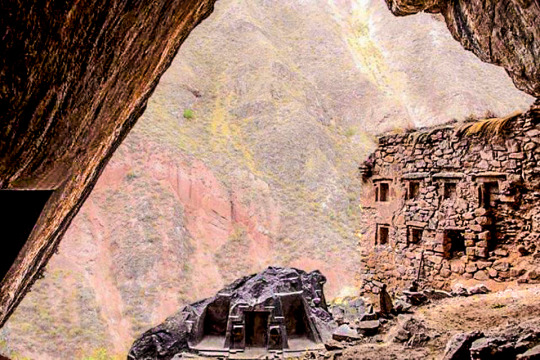
INCA QUARRY TREK INFORMATION
Cachicata or Inca quarry is one of the old quarries used by the pre Inca and Inca civilizations to build the vast complexes of Ollantaytambo. It was a source of large amounts of pink granite. Cachicata quarries are 14 km from Ollantaytambo. The view of Ollantaytambo from the quarries is spectacular and during the walk you can see many large stones that remained in the middle of their long trip to the village. It was also a commercial route for the Incas. Cachicata is a small and remote town that can benefit from the occasional visit of tourists.The Hike to Cachicata is a great alternative to the famous Inca Trail hike. This road was built by the Incas and used for hundreds of years to access local communities and transport goods. This trail is not as well known as the Classic Inca Trail, so much less crowds and a more serene trekking experience in Peru are expected. This hiking adventure not only visits Peru's cultural past, but also explores modern Inca communities and customs. The trail takes us through isolated waterfalls, ancient terraces and exotic wildlife, while offering fantastic views of the Sacred Valley and its snowy mountains. Visit with local families and explore an active quarry. Each step brings a new look to the Inca culture.
How long is Ollantaytambo?
The trip from the city of Cusco to the Inca city of Ollantaytambo is approximately 1 hour and 30 minutes in private mobility but if you wish to travel in the public transport units the approximate time is 2 hours.Can you climb to the Inca quarry of Cachicata without a guide?
The Walk to the Inca quarry of Cachicata being part of the Inca road circuit that runs through the country of Peru, and the circuit of Qhapap Ñan, it is recommended that it be carried out with the supervision of an authorized agency that provides the professional guide service so that you can enjoy the best way to hike and take a nice memory to your country.How high is Inti Punku "Puerta del Sol"?
Inti Punku or «Puerta de Sol» is the highest point on the hike to the Inca quarry being at a height of approximately 3886 meters from that point you can see an impressive view of the Sacred Valley and the Snowfall that are around as are the snow Veronica.What should I take to make the walk to the Inca quarry of Cachicata?
To make the walk without any inconvenience we recommend the following:- A lightweight backpack to carry your stuff.
- Water bottle.
- Money for snacks, souvenirs and tips if you want to tip.
- Hat, sunscreen and sunglasses
- Jumper (sweater)
- Protection against rain (or plastic poncho) the Cusco region can experience "all seasons in one day", therefore, it is advisable to wear a hat and gloves, as well as a sun hat, when you go out tomorrow, in order to be prepared for all eventualities.
Is a tourist ticket needed for the Inca Quarry of Cachicata?
At the moment no income is being collected, which will allow you to discover more freely the path of the Incas to the Inca quarries of Cachicata.Friday, 21 February 2020
ABRA MALAGA - INCA JUNGLE ROUTE
The predominant ecosystem is the rain forest Montano Tropical or cloud forest in the Carrizales area, with low-rise tree forests covered by epiphytic plants and also some bamboo areas. In the Abra Málaga, at 4,200 meters high, we are in a tropical rainforest-Montano moor, with small Polylepis forests at the basin births.
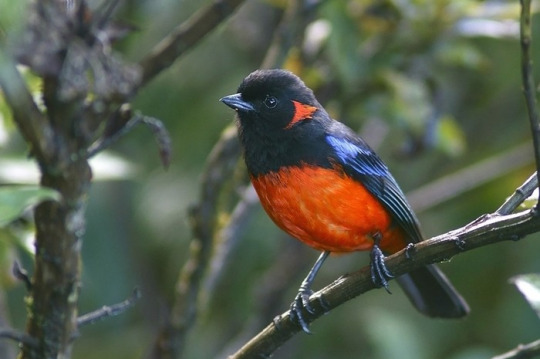
History
The birdlife in this area of Peru
was studied since 1869 by Sclater and Salvin, Berlepsch and Stolzmann (1906).
In 1915 an expedition of the Geographical Society Machu Picchu is made, directed by Frank M. Chapman and George K. Cherrie (July 1-24, 1916), and by Harry L. Watkins (April 3-25, 1917).
From September 1974, June 1976, 1977 and 1978, October 1978 and August 1979, personnel from the Zoological Museum of Louisiana State University (LSU) visited the valley to conduct an inventory and increase knowledge of birds and small mammals. Three main camps were made along the Ollantaytambo-Quillabamba road through the Abra Málaga (3900 m), and a fourth was in Kiteni (450 m), after Quillabamba.
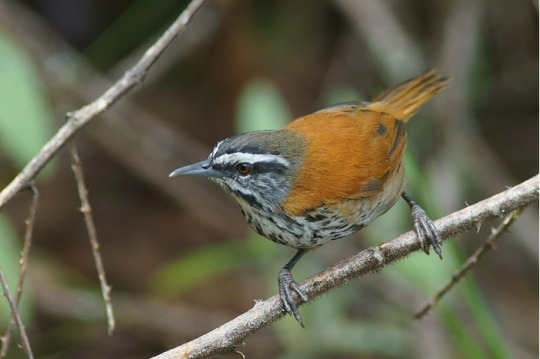
Starting from Ollantaytambo, the first place to visit is Las Peñas, located 15 Kms from the town. Named for having remains of Inca stone constructions in place. In the surroundings, between the bushes and at the edge of the road you can see: Cuzco Brush-finch, Chestnut-breasted Mountain-finch, Tyrian Metaltail, Shining Sunbeam, White-tufted Sunbeam, Puna Tapaculo, White-browed Conebill.
Another place of interest is the descent of the Abra, on the way to Quillabamba, where the good places are the Vegetation patches around the track, there you can see the Puna Thistletail, Unstreaked Tit-tyrant, Creamy-crested Spinetail, Diademed Tapaculo, Thrush- like Wren, Rufous-chested Tanager, Buff-breasted Mountain-tanager, Chestnut-bellied Mountain-tanager, Scarlet-bellied Mountain-tanager, White-bellied Hummingbird.
The Abra Málaga Thastayoc is the highest point of the route and is the safest and most accessible area to see the Royal Cinclodes. To do this you must follow the path that starts at the checkpoint, located at the highest point of the Abra. From there follow the path until you reach a Polylepis forest located at 4,150 meters high. You can also see the Stripe-headed Antpitta, Blue-mantled Thornbill, Shining Sunbeam, Puna Tapaculo, White-browed Tit-spinetail, Tawny Tit-Spinetail. The route for this forest is very rugged and long. It takes 2-3 hours to travel.
Weather
The weather is rainy between the months of November to April, and temperate with infrequent rains between the months of May to October. The temperature varies from -5 degrees in the Abra Málaga to 20 degrees in the Carrizales area.Policies
Along the road it is not necessary to make any payment. To enter the Cinclodes route, it is necessary to pay an entrance fee, differentiated for Nationals and Foreigners. This payment is made at the checkpoint. Here you have bathrooms.INFORMATION OF INCA JUNGLE



































